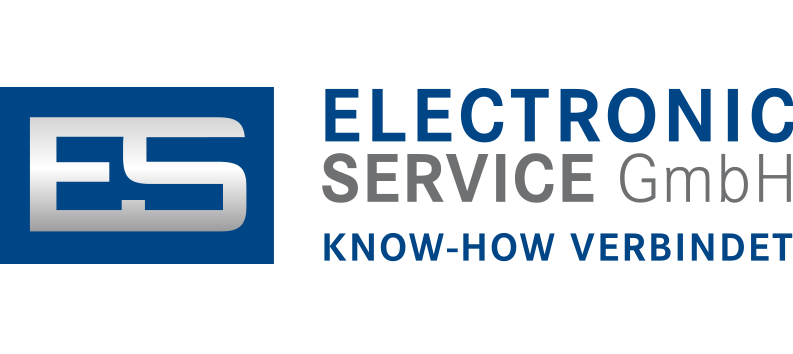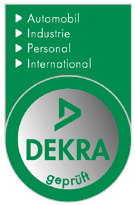SENSOR TECHNOLOGY AS THE NERVOUS SYSTEM OF AUTONOMOUS DRIVING: WHEN VEHICLES LEARN TO SEE
Autonomous driving is impossible without high-precision, reliable sensor technology. Cameras, radar, lidar and ultrasonic sensors continuously supply data that controls driving functions, safety systems and navigation. However, it is the seamless integration of these sensors, protection against electromagnetic interference and the targeted use of RF absorbers that make the technology ready for series production. In this article, you will receive a well-founded overview of today’s sensor landscapes, their challenges in the high-frequency range and the role of RF absorbers from the ESorb series from E.S. Electronic Service. This will help you understand why every autonomous driving sensor can only realize its potential through perfect environment management.
Why sensors are at the heart of autonomous vehicles
Sensors transform the environment into digital information. They record distances, speeds, obstacles and weather conditions and thus create the basis for decisions made by driver assistance systems and fully autonomous control units. The more precise and redundant the sensor technology, the safer the function and the higher the probability of regulatory approval.

Image: iStock.com/Scharfsinn86
Sensor types at a glance
Radar, lidar, cameras and ultrasonic sensors together form the electronic sensory organ of modern vehicles: radar measures distances and speeds even in rain or darkness, lidar generates millimetre-precise 3D images of the surroundings, cameras provide color information and detect traffic signs, while ultrasound detects obstacles at close range. Let’s take a look at the details:
Digital display of an autonomous vehicle: sensor fusion of radar, lidar and cameras records the surroundings in real time. The image illustrates the intelligent evaluation of sensor data for safety and navigation.
Radar – the all-weather system
Radar operates in the high frequency range of 24 GHz and 77/79 GHz. Modern 4-D radar chips now detect height, speed and direction with high resolution. The advantages are robust measurements in fog, rain and darkness as well as a long range of up to 300 m. A front radar in Adaptive Cruise Control (ACC) automatically maintains a safe distance from the vehicle in front, even when visibility is restricted by heavy rain. Without this sensor for autonomous driving, comfortable and safe distance control would be inconceivable.
Lidar – point clouds in real time
Lidar systems (Light Detection and Ranging) provide three-dimensional point clouds using laser pulses. Time-of-flight and FMCW lidar detect distances of up to 200 m with centimeter accuracy and supplement radar with detailed contours, road markings and small objects. A high-resolution roof-mounted lidar in Robo-Taxis creates a live 3D map of the surroundings and detects pedestrians crossing the road at an early stage.
Cameras & AI – visual intelligence
CMOS cameras with neural image processing recognize traffic signs, traffic lights, pedestrians and lanes. They combine high resolution with cost-efficient hardware and enable semantic scene understanding. A front camera reads speed limits and transmits the information to the cruise control, which automatically adjusts the vehicle.
Ultrasound – precision at close range
Ultrasonic sensors monitor distances of less than five meters and are indispensable in parking systems and blind-spot systems. Their compact design and low energy consumption make them ideal for mass markets. In automatic parking assistants, lateral ultrasonic sensors measure the distance to kerbs and control steering and braking processes.
Challenges in the high-frequency range
The higher the frequency, the more sensitive signals are to reflections. Metallic housing edges, circuit boards and cables generate multipath echoes that distort radar pulses or scatter lidar pulses. Electromagnetic coupling between antennas and digital circuits can also lead to EMC problems. The following therefore applies to every autonomous driving sensor: only control of the high-frequency environment ensures stable measurement results.
HF absorber as the key to clean signal processing
This is where HF absorbers come into play. Special microwave absorbers made of Dielectric Absorber Foam or MAGRAM attenuate electromagnetic waves and prevent unwanted reflections. You will find suitable solutions in the E.S. Electronic Service portfolio:
- Narrowband flat absorber – Targeted attenuation of individual radar bands
- Broadband flat absorber – Effective absorption over wide frequency ranges
- Cavity absorber – Suppression of standing waves in enclosures and test chambers
You can find more information on the entire product family on the HF absorber category page.
HF absorbers in practice
Development and test departments in the automotive industry install RF absorbers in radar test chambers, lidar calibration stations and control unit housings to improve the signal-to-noise ratio. This reduces the false alarm rate by up to 40 percent, while the detection range remains constant.
Validation & standards – from the test chamber to the road
Before sensors go into series production, they have to pass strict test programs. Hardware-in-the-loop tests, EMC measurements and environmental tests in accordance with ISO 26262 (functional safety) and ISO 21448 (safety of the intended functionality) ensure behavior in every situation. UNECE R155/156 also requires cyber and software update capability over the entire vehicle life cycle. RF absorbers in test chambers and control unit housings ensure stable radar and lidar signals, allowing standard limits to be reliably adhered to and approval processes to be accelerated.

Image: iStock.com/choidongsu
The future of sensors: more compact, smarter, more connected
Sensors are developing rapidly, becoming smaller, more intelligent and more networked. These trends show which technologies will soon find their way into series production vehicles:
- Four-dimensional radar imaging – provides a very high angular resolution and approaches the depth of detail of lidar systems.
- Solid-state lidar – thanks to stackable laser light sources, costs are falling significantly, which is why the technology will soon be used in series production vehicles.
- Sensor fusion – particularly powerful on-board computers process over a trillion arithmetic operations per second and fuse radar, lidar, camera and ultrasound signals in real time.
The next generation of sensors will be even more compact, energy-efficient and intelligent. Artificial intelligence directly in the sensor reduces delays, while wireless software updates subsequently activate new functions. Advanced photonic materials expand the measurement spectrum and increase the resolution. This further increases performance while reducing costs and weight.
The essence of the sensor revolution – everything you need to know at a glance
The future of autonomous driving depends on reliable sensor technology. However, radar, lidar and camera systems can only develop their full potential with professional thermal management and EMC shielding. E.S. Electronic Service supports you with the ESorb series of RF absorbers – from the concept phase to series production.
Get advice now
Would you like to shield your sensor solutions in a targeted manner and save time and development costs? Get in touch with us – our experts will show you how to take your project to the next level with RF absorbers.
Kontakt
E. S. Electronic Service GmbH
Hohe Straße 3
61231 Bad Nauheim
Telefon: +49 (0) 6032 9636-0
Telefax: +49 (0) 6032 9636-49
E-Mail: info@electronic-service.de
CONTACT
E. S. Electronic Service GmbH
Hohe Straße 3
61231 Bad Nauheim
Phone: +49 (0) 6032 9636-0
Fax: +49 (0) 6032 9636-49
Email: info@electronic-service.de
ABOUT US
The E.S. Electronic Service GmbH produces and markets customer-oriented solutions worldwide. In doing so, we concentrate our resources on electronic components, materials with a focus on EMI shielding, heat conduction, as well as noise filters and absorbers.


